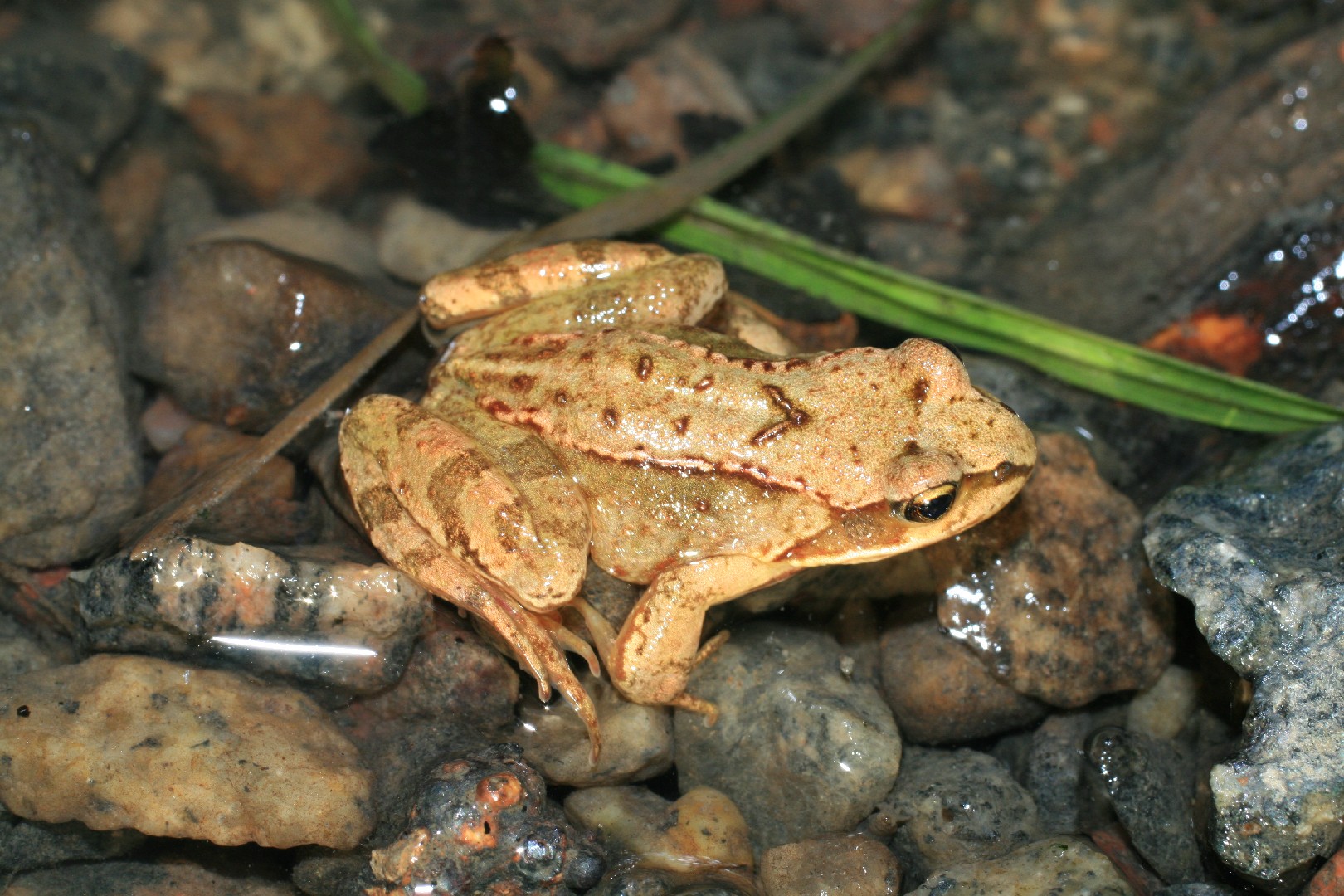Moor frog
A species of Holarctic true frogs Scientific name : Rana arvalis Genus : Holarctic true frogs
Moor frog, A species of Holarctic true frogs
Scientific name: Rana arvalis
Genus: Holarctic true frogs
Content
Description General Info
 Photo By Korall , used under CC-BY-SA-3.0 /Cropped and compressed from original
Photo By Korall , used under CC-BY-SA-3.0 /Cropped and compressed from original Description
The moor frog (Rana arvalis) is a slim, reddish-brown, semiaquatic amphibian native to Europe and Asia. It is a member of the family Ranidae, or true frogs.
General Info
Lifespan
3-6 years
Diet
Moor frog predominantly feeds on insects, such as ants, beetles, and grasshoppers. They also consume spiders and snails, as well as smaller invertebrates. This species showcases opportunistic feeding behaviors, adapting their diet according to seasonal fluctuations of food availability.
Appearance
Moor frog is a small, slender-bodied amphibian, typically measuring less than 10 centimeters. It sports smooth skin that varies in color from blue-gray to olive green, often with dark spots and a pearl-hued underside. A defining feature in males during the breeding season is the vivid blue of their sides and thighs. Its body ends with a short, pointy snout and ends with a powerful hind pair of legs, which are larger in males.
Behavior
Moor frog is a semi-aquatic, solitary species, typically exhibiting crepuscular activity, feeding mainly on invertebrates. Known for its marked territorial behavior, males defend their breeding sites conspicuously. During breeding season, complex vocalizations are used as courtship behavior. The species hibernates in winter, demonstrating its adaptability to colder environments.
Population
Stable
Scientific Classification
Phylum
Chordates Class
Amphibians Order
Frogs and toads Family
True frogs Genus
Holarctic true frogs Species
Moor frog